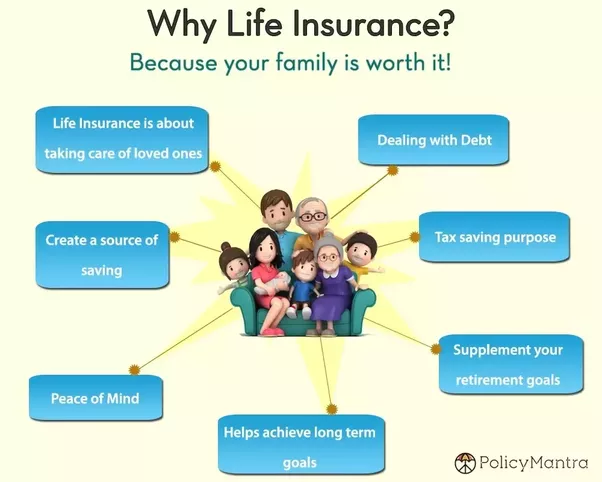The Basic Principles Of Pacific Prime
The Basic Principles Of Pacific Prime
Blog Article
The Pacific Prime Statements
Table of ContentsGet This Report about Pacific PrimeGetting The Pacific Prime To WorkMore About Pacific PrimeSome Ideas on Pacific Prime You Need To KnowThe Facts About Pacific Prime Revealed
:max_bytes(150000):strip_icc()/terms_i_insurance_FINAL_-3556393b3bbf483e9bc8ad9b707641e4.jpg)
This is due to the fact that the data were accumulated for a duration of solid financial performance. Of the estimated 42 million people who were without insurance, almost regarding 420,000 (concerning 1 percent) were under 65 years of age, the age at which most Americans come to be qualified for Medicare; 32 million were adults in between ages 18 and 65, around 19 percent of all adults in this age; and 10 million were kids under 18 years old, regarding 13.9 percent of all youngsters (Mills, 2000).
These price quotes of the number of persons without insurance are created from the yearly March Supplement to the Current Population Study (CPS), performed by the Demographics Bureau. Unless otherwise noted, national estimates of people without medical insurance and proportions of the population with different kinds of protection are based on the CPS, the most extensively made use of source of quotes of insurance policy coverage and uninsurance prices.
Some Known Facts About Pacific Prime.

Still, the CPS is particularly useful since it generates annual estimates fairly rapidly, reporting the previous year's insurance protection estimates each September, and due to the fact that it is the basis for a constant collection of estimates for more than two decades, enabling for evaluation of fads in coverage with time. For these factors, as well as the considerable use the CPS in other studies of insurance protection that are offered in this record, we rely upon CPS estimates, with limitations kept in mind.

The price quote of the number of without insurance people expands when a populace's insurance policy condition is tracked for a number of years. Over a three-year duration beginning early in 1993, 72 million individuals, 29 percent of the united state populace, lacked coverage for at least one month. Within a single year (1994 ), 53 million people experienced a minimum of a month without coverage (Bennefield, 1998a)
Six out of every ten without insurance adults are themselves used. Functioning does improve the possibility that one and one's family members will have insurance coverage, it is not a warranty. Also participants of families with 2 permanent breadwinner have practically a one-in-ten chance of being uninsured (9.1 percent uninsured price) (Hoffman and Pohl, 2000).
The Greatest Guide To Pacific Prime
New immigrants make up a substantial percentage of people without medical insurance. One evaluation has actually attributed a substantial portion of the current development in the size of the united state without insurance population to immigrants who arrived in the nation between 1994 and 1998 (Camarota and Edwards, 2000). Recent immigrants (those that involved the USA within the past four years) do have a high price of being uninsured (46 percent), but they and their kids account for simply 6 percent of those without insurance policy country wide (Holahan et al., 2001).
The relationship in between medical insurance and access to care is well developed, as recorded later on in this chapter. The relationship in between health insurance policy and wellness results is neither straight nor basic, a considerable professional and health services research study literary works web links wellness insurance policy coverage to enhanced access to care, better quality, and boosted individual and populace health standing.
Levels of analysis for taking a look at the impacts of uninsurance. It focuses especially on those without any kind of health insurance policy for any kind of length of time.
The Buzz on Pacific Prime
The issues dealt with by the underinsured remain in some aspects comparable to those dealt with by the without insurance, although they are usually much less extreme. expat insurance. Uninsurance and underinsurance, however, involve distinctly various plan problems, and the methods for addressing them may differ. Throughout this study and the 5 reports to comply with, the main emphasis gets on persons with no health insurance policy and hence no help in paying for healthcare past what is available through charity and safeguard organizations
Wellness insurance coverage is a powerful factor influencing receipt of care due to the fact that both clients and physicians reply to the out-of-pocket cost of solutions - https://pacificpr1me.edublogs.org/2024/04/02/pacific-prime-your-one-stop-shop-for-insurance-solutions/. Health and wellness insurance coverage, however, is neither necessary nor enough to get to medical solutions. The independent and direct effect of wellness insurance policy coverage on accessibility to health and wellness services is well developed.
Others will certainly obtain the wellness care they require even without wellness insurance coverage, by spending for it out of pocket or seeking it from companies that provide treatment totally free or at very subsidized rates. For still others, medical insurance alone does not make certain receipt of treatment because of other nonfinancial obstacles, such as a lack of health and wellness treatment companies in their area, limited accessibility to transport, illiteracy, or linguistic and social distinctions.
A Biased View of Pacific Prime
Formal research study regarding without insurance populaces in the USA dates to the late useful content 1920s and very early 1930s when the Board on the Price of Treatment produced a series of reports concerning funding physician office gos to and hospitalizations. This issue became significant as the varieties of medically indigent climbed during the Great Anxiety.
Report this page